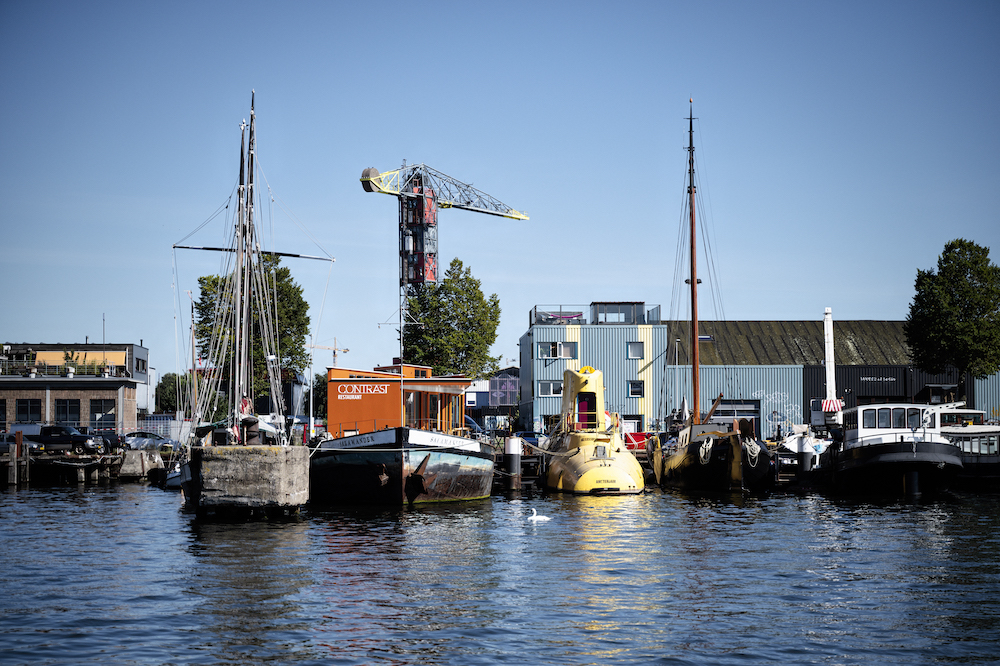
Over the past 30 years, consumer demand for cleaner, healthier and more circular shoes has caused a sea change in the fashion industry, impacting everything from materials to dyeing practices, production processes and the life cycle of our shoes.
And while the majority of shoes still comprise virgin plastic, rubber or petroleum, today you can easily find sneakers made from coffee grounds, mushrooms and algae – something that would have sounded futuristic just as decade ago.
Here, we take a look at the progress we’ve made so far as a society and the innovations that could shape the industry’s future.
The 1990s signaled a time of reckoning for global sneaker brands. As shoe industry giants like Nike and Adidas exploded in popularity, they cut costs by offshoring production to developing countries overseas. But when consumers learned about the use widespread of sweatshops and child labor, they boycotted the big brands and demanded more ethical practices.
Boycotts and bad press impacted the companies’ bottom lines and, ultimately, pressured them to develop more socially and environmentally sustainable production processes. One of the programs to emerge from this era is Nike’s “Reuse-a-Shoe” program.
Launched in 1993, the initiative began as a charity drive to collect worn-out shoes and give them a second life as rubber material for athletic and playground surfaces. The material that didn’t end up on the playground or track would be recycled and used to make new Nike products – an effort that continues today.

On the back of its Reuse-a-Shoe program, Nike continued to invest in sustainability. In 2008, the company debuted its “Nike Considered” program, which aimed to reduce waste throughout the design and development process, eliminate toxic materials and strive for sustainability across its core business categories: basketball, running, football, men’s and women’s training, and sportswear.
While Nike revised its existing design strategy, other brands built sustainability into their DNA from day one. One such brand is Stella McCartney. Since its founding in 2001, the cruelty-free, vegan luxury fashion label has never used fur, leather, feathers or skins in its shoes or sneakers.
By 2010, Stella McCartney had banned the use of polyvinyl chloride, or PVC, across the company as well. Described as the “single-most environmentally damaging type of plastic” by Greenpeace, PVC is made using toxic chemicals that build up in the air, water, and food chain.
In 2004, start-up shoe brand Ethletic produced the world’s first sneaker using Fairtrade-certified organic cotton. And in 2016, the company earned PETA’s Vegan Approved seal for its wide range of vegan shoes.
Promising to “walk the talk,” bootmaker Timberland not only introduced “nutrition labels” to its packaging to increase accountability and transparency but also started embracing recycled PET, also known as rPET, to give a second life to what otherwise would have become waste. In 2007, for example, The Earthkeeper featured lining and laces made from recycled plastic, recycled rubber soles, and leather from tanneries with Silver and Gold ratings from the Leather Working Group.
Shoe companies took significant strides when it came to sustainability in the 2010s. Many adopted vegan practices, while others eschewed petroleum-derived plastic components. For instance, after ditching PVC, Stella McCartney went on to collaborate with Adidas and Parley for the Oceans to create shoes made from ocean plastic debris in honor of World Oceans Day 2017. The next year, she debuted the first vegan Stan Smith sneaker in partnership with Adidas made with faux-leather and recycled polyester (rPET).
Reebok launched a vegan sneaker with a sole made from corn, an insole derived from castor bean oil and an upper woven with recycled cotton. At the same time, Adidas introduced a 100 percent recyclable running shoe. And Timberland came out with GreenStride – a collection of shoes made with rPET from plastic water bottles and a sole made from sugarcane and natural rubber as part of its “remade, reused, recycled’ vision.
While sustainable materials gained a foothold in the shoe industry, labor rights violations emerged once again. Despite lessons learned in the 1990s, Nike took a step backwards in 2017, blocking labor rights experts from the Worker Rights Consortium from assessing its supplier factories. A year later, a Know The Chain report found several major footwear brands, including Reebok and Puma, still failed to address exploitation in their supply chains.

From biodegradable plant-based shoes by Reebok to vegan soccer cleats by Puma, dandelion-based sneakers by Cole Haan and mushroom fiber trainers by Adidas, sustainability is moving from the margins to the mainstream. Consumers and sneaker start-ups alike have successfully pushed big brands to use plastic alternatives and design for circularity with the shoe’s full life cycle in mind.
Of course, this isn’t the end of the road – far from it. At Fullup., we want to be part of the next wave of change and help the industry move in the right direction. We use yarn spun from recycled plastic bottles to make our knit uppers and laces and our patented FullupLite 360 sole is designed for longevity. We also use vegan suede for our insoles and a Strobel made from 70% recycled materials.
In terms of our processes, we use only water-based glues, do not use eyelets because they require toxic metal processing, and use 3D-printed molds to reduce textile waste and energy consumption. All the while, we maintain close relationships with our suppliers to ensure the health and safety of the people who make your shoes.
Fullup. shoes are built to last – they are comfortable, durable and machine-washable – and stand the test of time. The longer they last, the fewer shoes you need to buy. And with more than 20 billion pairs of sneakers produced each year globally, every shoe diverted from a landfill matters.



We are committed to making minimalist, durable lifestyle products that you can FEEL GOOD about wearing. Our extensive EXPERIENCE in the fashion industry enables us to source our most premium and durable materials, develop a streamlined and traceable supply chain, and create versatile sneakers with STYLE and LONGEVITY in mind. After all, the longer we can wear each pair of shoes, the less waste we produce.
© 2022 Fullup.Official